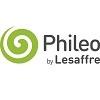
Content sponsored by:
Phileo by Lesaffre
Northern European dairy herds face rising heat stress threat
Published: July 19, 2018
Source : Phileo Lesaffre Animal Care

Heat stress in dairy cows is becoming an increasing problem in northern Europe according to Phileo Lesaffre Animal Care, France.
Long acknowledged as a serious summer threat to cow health and production across the world’s hotter regions, heat stress is now seen as a rising issue for dairy herds as far north as the UK.
“Due to the impact of climate change on global temperatures, heat stress exposure for dairy cows in Europe is clearly growing,” said Phileo’s Technical Manager for the UK & Ireland, James Ambrose.
Findings from research carried out in Croatia and Slovenia show that dairy cows in Hungary now face heat stress conditions for an average of 17 days a year, three times the level recorded in the country 30 years ago.
“It’s also suggested that by the end of the century, dairy herds in southern parts of the UK could be coping with heat stress for up to 20 days a year, compared to the one or two days they encounter at present.”
In addition to the impact of climate change on northern European herds, there’s also evidence that the region’s dairy cows start to suffer heat stress at lower temperatures than their southern European counterparts.
“This is because, under northern European conditions, high levels of humidity (>70%) can be a bigger driver of heat stress than temperature,” said Mr Ambrose. “This is especially true for housed herds.”
Assessing heat stress risk periods globally is based on the industry-recognised temperature humidity index (THI). This measures the combined effect of ambient temperature and relative humidity (RH) to calculate a cow’s heat load intensity.?For high performing cows, the lowest threshold point at which they would be expected to suffer heat stress is THI 72, a rating which covers a temperature range of 23.9 °C to 32.2 °C and an RH of 65% to zero.
“Although THI 72 is a sound and accepted average trigger point for heat stress across the world, it’s important that northern European producers, in so-called non-typical heat stress countries, pay close attention to cow behaviour during high-risk periods,” said Mr Ambrose.
Early heat stress signs in dairy cows include panting, sweating and standing more than normal, factors which often lead to cows failing to eat as much as usual. This can result in a rapid decline in performance with milk yields falling by up to 40%. There are also several follow-on health issues such as increased lameness, due to extended standing times; rumen acidosis, triggered by increased panting and drooling; a fall in reproductive efficiency and a higher risk of other diseases developing.
Countering heat stress in dairy cows includes a range of strategies, such as changing feeding regimes, environmental and mechanical strategies and the use of feed supplements
Current nutritional measures include altering feeding times to coincide with cooler parts of the day; giving feed in smaller amounts and increasing the number of feeding times; making sure high moisture feeds are dispensed before they undergo secondary fermentation.
Environmental and technical initiatives include improving roof insulation for summer-housed herds to reduce solar penetration; increasing the amount of available water; installing fans or opening the sides of the barn to increase air flow, and fitting misters in combination with fans to further reduce temperatures.
Supplement solutions include adding yeast probiotics to diets. Trials, for example, with Phileo’s probiotic yeast, Actisaf®, resulted in improved fibre digestion in heat-stressed dairy cows; helped stabilise the rumen and reduced respiratory rates. This led, in turn, to increased milk and milk solids production. The company has also achieved positive results with its premium yeast parietal fraction, Safmannan®, and its selenium-enriched yeast, Selsaf®.
Source
Phileo Lesaffre Animal CareRelated topics:
Mentioned in this news release:

Recommend
Comment
Share

Would you like to discuss another topic? Create a new post to engage with experts in the community.


